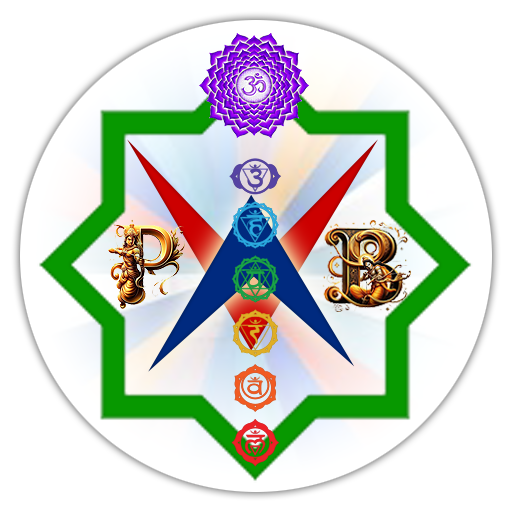శ్రీ మదగ్ని మహాపురాణము - 208 / Agni Maha Purana - 208
- Prasad Bharadwaj
- Apr 26, 2023
- 3 min read

🌹. శ్రీ మదగ్ని మహాపురాణము - 208 / Agni Maha Purana - 208 🌹
✍️. పుల్లెల శ్రీరామచంద్రుడు, 📚. ప్రసాద్ భరద్వాజ
శ్రీ గణేశాయ నమః ఓం నమో భగవతే వాసుదేవాయ.
ప్రథమ సంపుటము, అధ్యాయము - 61
🌻. ద్వారప్రతిష్టా ధ్వజారోహణాది విధిః - 3 🌻
పాషాణాదులలో నున్న జలము పార్థివజలము దానిలో పృథీవీగుణ మగు గంధ ముండును. ప్రతిధ్వనిరూప శబ్దమే అచటి శబ్దము. స్పృశింపగా కనబడు కఠోరత్వాదికమే స్పర్శ. శుక్లాదీవర్ణములు రూపము. ఆహ్లాదమును కలిగించు రసమే రసము ధూపాదిగంధమే గంధము భేర్యాదులలో ప్రకట మగు నాదమేవాక్కు. అది వాగింద్రియము వంటిది అందుచే వాగింద్రియము అచటనే ఉన్నదిని భావించవలెను. నాసిక శుకనాసయం దుండను, దాని రథకములు భుజములు. శిఖరముపై అండాకారము నున్నది శిరస్సు. కలశ కేశపాశము. ప్రాసాదకంఠభాగము కంఠము. వేది భుజము. రెండు నాళికలు గుదోపస్థులు . సున్నము త్వక్కు. ద్వారము ముఖము. ప్రతిమయే దేవాలయజీవాత్మ. పిండిక జీవశక్తి. దాని ఆకారము ప్రకృతి. నిశ్చలత దాని గర్భము. నారాయణుడు దాని అధిష్ఠాత. ఈ విధముగ మహావిష్ణులే దేవాలయరూపమున నిలచియున్నాడు. శివుడు కాళ్ళు; బ్రహ్మ స్కంధముపైన నున్నాడు.(
ఊర్థ్వభాగమున సాక్షాత్తు విష్ణువే ఉండును. ఈ విధముగ నున్న ప్రాసాదమున ప్రతిష్ఠింపబడు ధ్వజమును గూర్చి వినుము. శస్త్రాదిచిహ్నములతో కూడిన ధ్వజమును నిలబెట్టి దేవతలు దైత్యులను జయించిరి. అండముపై కలశము నుంచి, దానిపైన ధ్వజమును స్థాపింపవలెను. ధ్వజమానము బింబమానములో సగ ముండవలెను. ద్వజదండము పొడవులో మూడవ వంతుతో చక్రము నిర్మింపవలెను. ఆ చక్రమునందు ఎనిమిది కాని పండ్రెండు గాని ఆకు లుండవలెను. దాని మధ్య నృసింహుని మూర్తి గాని, గరుడుని మూర్తి గాని ఉండవలెను. ధ్వజదండము విరిగినదిగాని, రంధ్రాదు లున్నది గాని కాకూడదు. దండము పొడవు ప్రాసాదము వెడిల్పుతో సమముగా నుండవలెను.
సశేషం....
🌹 🌹 🌹 🌹 🌹
🌹 Agni Maha Purana - 208 🌹
✍️ N. Gangadharan 📚. Prasad Bharadwaj
Chapter 61
🌻Consecration of doors of the temple and the erection of banner - 3 🌻
21. The earthly waters found in the stone slabs (of the temple) (represent) the earthly attributes. Its echo stands for the principles of sound. Its touch represents roughness.
22. Its colour which may be white or otherwise stands for the subtle principle of colour. The food (and other eatables) offered (to the deity) stand for the sense of taste. The perfumes represent the sense of smell. The sense of speech lies in the down (used in the temple).
23. The keystone is the nose (of the temple). The two apertures (on either side) represent the two hands. The arched terrace above is to be taken for its head and the pitcher on the head.
24. Its neck should be known as the neck. The platform over the fault is spoken as the shoulder. The outlets for water are the anus and genitals. The lime-plaster is spoken as the skin.
25. The door would be the mouth. The image (installed in the temple) is said to be its life. The pedestal should be known as its energy. Its shape should likewise be known as its animation.
26. Its cavity is its inertia. Lord Keśava is its controller. In this way Lord Hari Himself remains in the form of the temple.
27. God Śiva should be known as the shank. God Brahman is located in the shoulder. Lord Viṣṇu remains in the upper portion of a temple as it is.
28. Listen to me. I shall describe the consecration of a temple by means of a banner. The demons were defeated by the celestial gods by erecting banners impressed with the signs of divine weapons.
29. The pitcher (shaped part of the temple) should be placed over the top and the flag should be placed over the same. The post should be made to measure a half or one third of the height of the image.
30. The flag should have a mark of a circle of eight or twelve radii. (There should be the figure) of the man-lion (form of Viṣṇu) or the Garuḍa (Tārkṣya) (inside the circle) in the middle. The staff of the flag should not have any cut.
Continues....
🌹 🌹 🌹 🌹 🌹




Comments